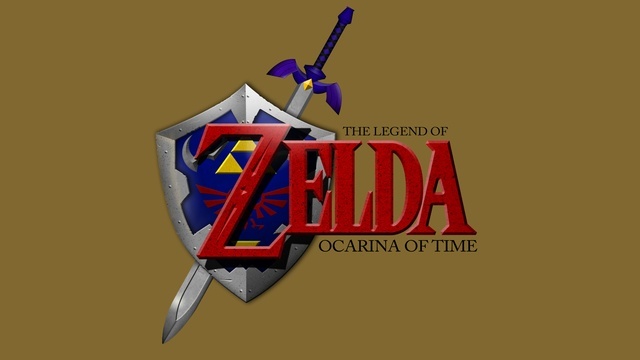
Epona, Link’s trusty steed, is another element of Ocarina that few can forget. She was conceptualized as far back as Super Mario 64, as well, but ultimately never made it into that game. Still, as Koizumi puts it, “I was certain we would do it for [Zelda 64], so I got ready.” Koizumi wanted Epona to become a key part of the player’s experience and thus chose to name her as opposed to simply referring to her as “horse.” “Epona is the goddess of horses and fertility in Celtic mythology, so I used that. When you name something, it increases your affection for it, so I worked hard to make her a good horse.” Epona was indeed a good horse, providing a necessary means of transport for Link to traverse the massive landscape of Hyrule. Miyamoto helped develop the carrot system to get her running, as he believed “that just riding around on a horse wouldn’t be very fun game-wise.” Funnily enough, Miyamoto was adamant that Epona not have any complicated movements like manual jumping, yet he was also the one who incorporated the timing-based, arguably not-simple carrot system!
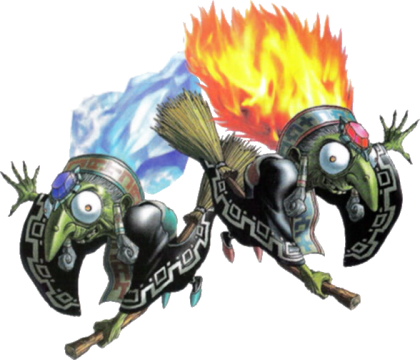
Cinema scenes weren’t necessarily new when Ocarina finally hit store shelves, but the way that the game renders them in real-time using the in-game assets right on the screen was a major innovation. Takumi Kawagoe handled the brunt of the cinematics for Ocarina and was passionate about letting players feel like they were in control of the action versus sitting back and passively watching a movie. Incorporating actual game assets, then, became a priority, as it allowed for very natural transitions between segments of gameplay and movie scenes. It also accommodated for the constant changes during development, whether it was alterations to the storyline or entirely new items being introduced. “I was always worried about what might come up,” Kawagoe said, “But I thought something like that might happen, so I prepared a tool to make such changes easier. We were making real-time in-game cut scenes, so even if the clothes or items changed, I could switch them into the scene.” This allowed Kawagoe to rapidly adapt to new scenarios and help keep production on track from his end.
It’s easy to take it for granted now, but composer Koji Kondo’s soundtrack is as equal of importance to any other aspect of Ocarina. Music theorist and analyst Andrew Schartmann’s book Koji Kondo’s Super Mario Bros. Soundtrack thoroughly analyzes the work of Kondo, including his score for the original The Legend of Zelda. Schartmann talks at length about how Kondo’s “music is atmospheric—it is designed to capture the vastness of Hyrule, and of Link’s quest. …[T]he Zelda music is epic. What makes it special, however, is how Kondo combines so many different genres into something entirely his own.” Kondo’s work began with Nintendo during the days of NES where he made a name for himself with his unique syncopated music, but with the advent of Nintendo 64 he was able to spread his wings further as an artist. Kondo discussed this in a 2014 interview with US Gamer:
“When we moved from the Super Nintendo to the N64, we were just able to create fuller-sounding music. We were able to create sounds that were more representative of actual instruments. And so, when I was creating the music myself, I had to think, ‘This isn’t going to sound like a computer. This is going to sound like an actual instrument.’ So, the composition and construction of the music itself—there were some slight changes because we had to think about the instruments that would be playing these sounds. We were able to recreate instruments more authentically, so that influenced how the music was composed.”
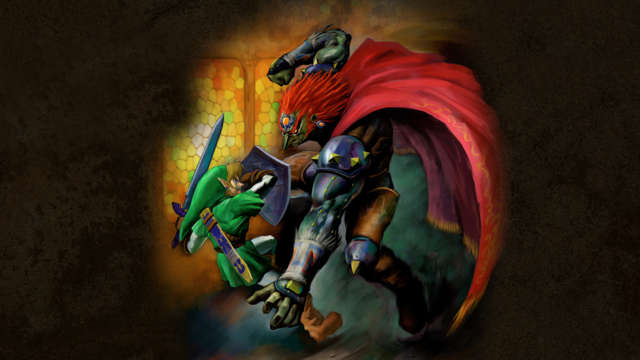
This newfound knowledge was invaluable during the creation of Ocarina, where Kondo would serve for the last time as a primary composer. In Ocarina there’s a wide, creative mix of tones and sounds and styles. Boleros bleed into chanting into folk music, and more besides. The variety is astounding and firmly creates a sense of place everywhere that the player goes. Another tenet of Kondo’s philosophy as a composer is that the music should work in service to the gameplay, not the other way around. In Ocarina, the music changes with what’s happening on-screen, transforming into a tune to signify danger when enemies are around, for example. Kondo was also very deliberate in his design of the overworld music, going so far as to create alternate versions of the song to play each time the player returned to it. “I thought about what I could do to have different music playing whenever you listened to it, and eventually I created several eight-measure ‘components’ to play randomly.” This attention to detail in the score is a huge part of the allure and enduring legacy of Ocarina.
With so much to do and see in Ocarina, it might seem as though every inch of the game was methodically planned out. While in many ways that is true, in others it is not. “We were just getting acquainted with the Nintendo 64 hardware and began development in a state of excitement over all the possibilities,” recalls Kawagoe. “As a result, our feelings and behaviour [sic] packed a lot into the game out of a sense of ‘Well, if we can do this, then let’s do that, too!'” This pioneering spirit was born of something touched upon earlier, which was the notion that the design team was making up the rules as they went along. As Iwata put it, “The group believed that anything was possible with the Nintendo 64 system, plunged ahead, discovered a lot of interesting stuff, omnivorously adopted it, and threw it all together in a way without any friction, resulting in a dense concentration of material.”
One fairly major obstacle that arose during development that couldn’t be overcome involved the 64DD. The 64DD was an expansion for Nintendo 64 that was intended to allow for greater storage capacity. Nintendo was pushing the device hard and wanted it to be compatible with Zelda 64 from the start. The problem was that the means by which the 64DD retrieved data simply didn’t work with how Ocarina was designed. The discs used magnetism to retrieve and store data, which proved much too slow in comparison to the standard Nintendo 64 ROM cartridges. “ROM cartridges don’t have moving mechanical parts, so you can retrieve motion data in an instant wherever it is, but with a magnetic disk, it takes time to move certain mechanical parts, so depending on where the data is, it takes time to retrieve it, so you couldn’t make Link move.” Iwata recounts. “If there weren’t many movements and you could fit them in the memory, you could read them to memory from the magnetic disk beforehand, but there were 500 patterns [for Link’s character movement].” As a result, playing Zelda 64 on the 64DD was proving impossible, so the game was finally repositioned as a Nintendo 64 release with a proposed 64DD expansion to come at some point afterwards.
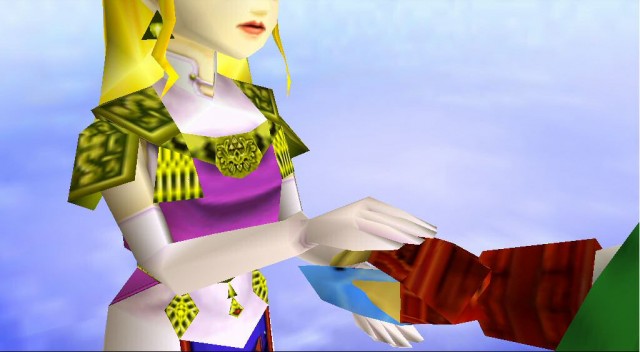
It wasn’t the only time during development that Ocarina faced the limitations of technology. Speaking with Iwata, Miyamoto himself recalled how at one point, they’d seriously considered limiting Link’s exploration to Ganon’s Castle. “I thought about putting all kinds of adventures into the different rooms, like making a dark meadow or an ocean – like in Princess Peach’s Castle in Super Mario 64.” He went on, stating “[i]n the worst case, Link wouldn’t have been able to go outside the castle!” Delays piled up over the course of the creation of Ocarina, but Miyamoto and company took it in stride. “The original plan was to release Super Mario 64 simultaneously with the Nintendo 64 system and to bring out The Legend of Zelda: Ocarina of Time the following year for Christmas,” Miyamoto said. “Developers generally like it when the deadline gets pushed back,” he continued. “Up until the very end, we were saying, ‘This needs more work and that needs more work.’” The delays might have frustrated fans, but in the end it served to make Ocarina as polished as possible when it finally hit stores.
As Nintendo drew closer to the end of development of Zelda 64, the process had grown quite long in the tooth. As far back as 1997 in issue 93 of Nintendo Power, it had been observed that “Mr. Miyamoto reports that development [of Zelda 64] is going well and the game should be done by the end of the year.” That release window was not to be, nor was the one for winter of ’97 nor the spring of ’98. The name Ocarina of Time wasn’t even formalized at this point, although in issue 101 of Nintendo Power fans started to hear word of something called “Ocarina Stones.” From 1996 to almost the launch of the game, Zelda 64 seemed to be in a perpetual state of flux, with new screenshots popping up that always appeared to show new tweaks, new looks for Link, and much more. The release finally began to creep into view, shattering preorder records and eventually setting massive sales milestones.
More importantly, however, is the legacy of Ocarina. It received numerous perfect scores from a variety of gaming news outlets. Its advances in cinematics, graphics, camera and play control, narrative, and more earned Ocarina its place as one of the top five games ever made. Countless game designers to this day cite Ocarina as an influence on their work. Whether playing the 3DS remake or the original, Ocarina is a seminal, inspirational creation that has and will continue to stand the test of time. For those who’ve yet to experience Ocarina of Time, it’s a pristine example of how powerful and magical video games can be. It wasn’t until Breath of the Wild that there could even be genuine debate as to what is the greatest Zelda game of all-time, but even now there are countless fans who would point to Ocarina above all others as the true king of not just the series, but video games in general.
Trivia
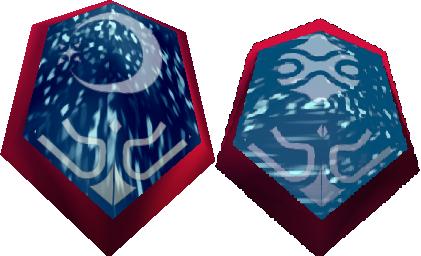
Example of the altered Gerudo symbol.
- Fishing was added into the game in secret by developer Kazuaki Morita while working on the Morpha boss fight. He also based the design of the fishing hole’s proprietor on someone who ran a similar fishing spot in his hometown.
- There are multiple elements of Ocarina that were either censored or outright removed in later editions of the game, including:
- The Fire Temple’s soundtrack had to be redone, as the original version featured Islamic chanting. Nintendo has a strict policy against explicitly referencing religion in its games, so the tune had to go.
- The original symbol for the Gerudo was a crescent moon and star. This was later changed to interconnected double-crescents with circles inside and triangular pendants above and below, as the original too closely represented iconography from the Middle East.
- Ganon bleeds red in earlier copies of Ocarina. This was later changed to green.
- In the 3DS remake of Ocarina, all blood is removed from the floors of Beneath the Bottom of the Well and the Shadow Temple.
- Talon and Ingo of Lon Lon Ranch are clearly meant to be analogues of Mario and Luigi. Talon and Malon even wear pendants that look a lot like Bowser!
- Likewise, the Composer Brothers Sharp and Flat are similarly themed off of the famous plumber siblings.
- The Stone of Agony is basically just a Rumble Pak made of rock (the peripheral was the next big thing for Nintendo at the time. Hello, HD Rumble, anyone?)
- In the courtyard of Hyrule Castle, portraits of Super Mario and friends can be glimpsed through the windows.
- Link was intentionally made cooler at the behest of Koizumi’s wife, who bemoaned Nintendo characters always having odd features.
What are your feelings about Ocarina of Time? Share with us in the comments and on social media!
Pages: 1 2




 ShareThis
ShareThis






The internet has been full of articles celebrating Ocarina’s 20th anniversary recently. This is by the far the most interesting one I’ve read.
Thank you for this Robert and Nintendojo!